Nature’s Math: Earthworm Measuring with Kids
Measuring earthworms with kids is a fun and educational outdoor activity that can provide a great opportunity for children to connect with nature and learn about the world around them. It’s a simple yet engaging activity that requires only a few basic materials and can be easily adapted to suit different age groups and skill levels. Measuring worms can also help children develop important skills such as observation, estimation, and measurement while fostering an appreciation for the natural world.
Today, UK mom and teacher Hannah of Hobie’s Nature Club is here exploring the fun activity of measuring worms with kids. She provides tips for getting started and offers some fun and creative ideas for turning this activity into a memorable outdoor adventure. Whether you’re a parent, teacher, or caregiver, measuring worms with kids is a great way to get them excited about learning and exploring the wonders of nature.
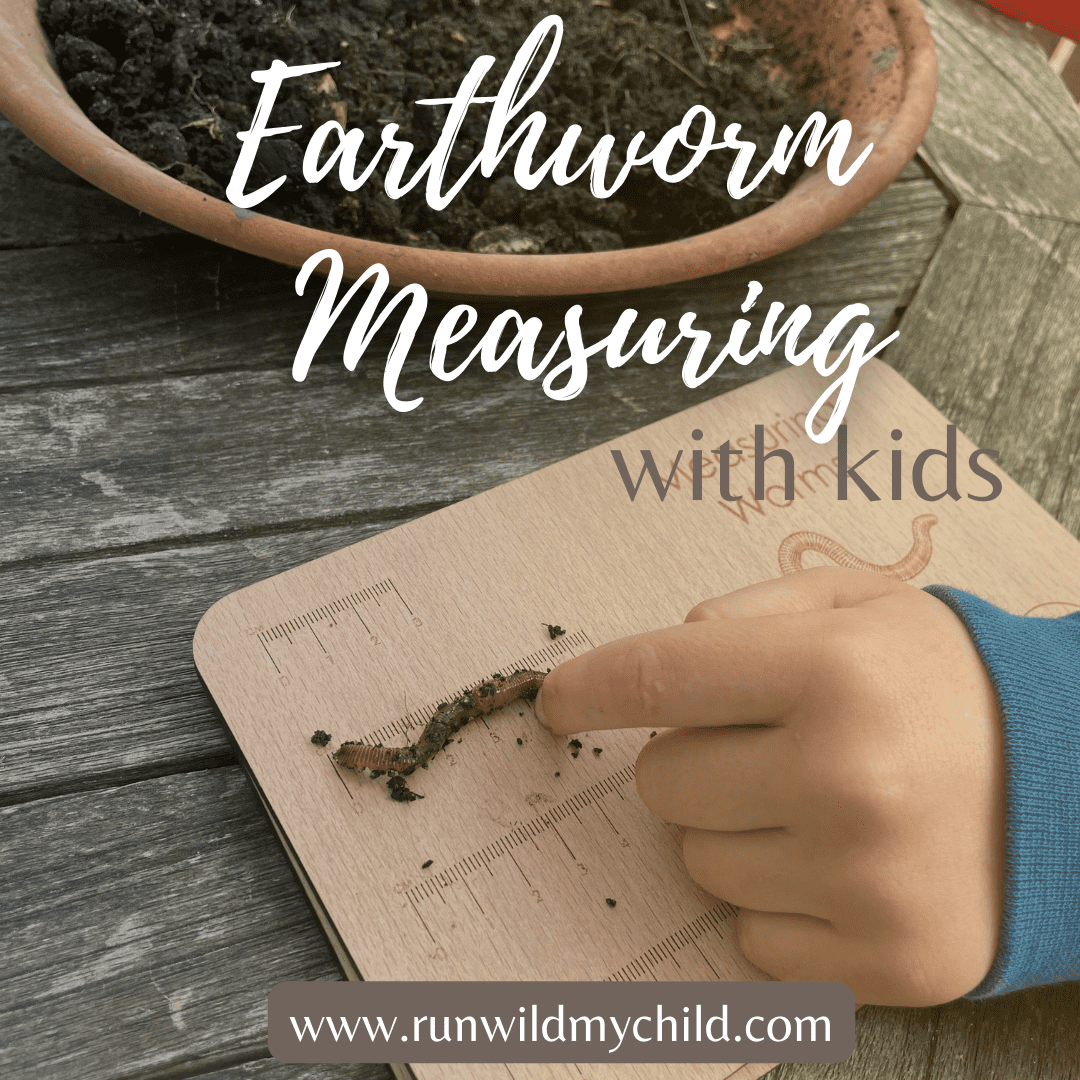
A bit about earthworms
Do you like being outside no matter the weather? Enjoy getting down and dirty with the kids? Well, we have a fun (and educational!) activity for you and your children that can be done in your own backyard — measuring worms!
Did you know, there are 30 species of earthworm in the UK, all of different sizes and colors? The US has 100 native species (and 60 invasive species) of earthworm.
Worms are essential to growing food and crops, but it is an ongoing question as to whether they are beneficial or detrimental to our soils.
A positive argument for earthworms is that they are responsible for aerating the soil and preventing flooding. They break down decaying plant waste such as leaves and stems. This is why you will always find them in your compost bin. They don’t eat growing flowers like the pesky slugs and snails. They are, of course, a major part of the food chain for birds and other invertebrates.
However, some scientists say that worms disturb the roots of growing plants, which can cause problems with their ability to absorb water. And due to worm’s ability to break down decaying matter, they can negatively impact the habitats of animals that live in the decaying leaves.

Fun with earthworms
But good or bad for the environment, earthworms are a part of our wildlife landscape and fun for kids to study and learn about. Measuring earthworms is a great way to not only teach kids about worms, but also spend time outside and do a little math in the process. I hope this activity gets you outdoors, provides a tool to get your children chatting about nature, and provides a fun way of involving learning in your play!
Treat your worms with kindness
No matter how we feel about worms, we need to be very careful with them and show them respect, like we do for all living creatures. Make sure all worms you catch are released back into the wild after about 30 minutes of exploration. However, if you still have more activities to do or just want to watch the worms some more, try to find some new worms. Worms are very sensitive. Do not handle them too much, and always use a gentle touch. Remember to keep them moist (use a mister, if necessary) and out of direct sunlight.
Worm measuring equipment
Measuring earthworms is such a simple, free activity you will just need a few basic items:
- Collecting tray or pot
- Shovel or trowel for digging
- Pen and paper
- Ruler (or we used this very cool worm measuring board)
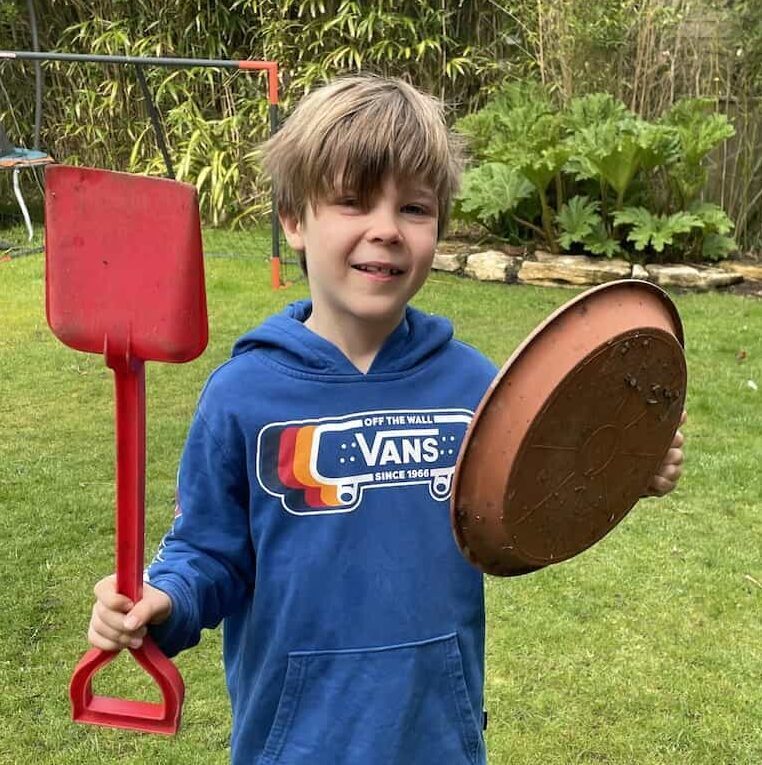
Hunting for earthworms
Once you’ve got your spade and a good damp place picked out, you just need to start digging. The best spots to find worms are usually in darker areas of your yard and where it’s damp, but not too wet. Make sure you dig around the worms to loosen the soil so you can gently pick them up and place them in your container. While collecting our worms, we created a competition challenging the kids to see who could get the longest, shortest, fattest, and pinkest worm. When you’ve collected each category, you can start to measure your worms.
Measuring earthworms
Now that you’ve got your worms, it’s time to measure them. When measuring worms with kids, it is important to use a technique that is safe, respectful to the animals, and appropriate for the child’s age and developmental level. Here are some tips for measuring worms with kids:
- Use a ruler or measuring tape: Using a ruler or measuring tape is a great way to measure the length of worms. Show the child how to line up the ruler or tape along the worm’s body to get an accurate measurement.
- Use a magnifying glass: A magnifying glass can help kids get a better view of the worm’s body, making it easier to measure its length.
- Be gentle: When handling worms, it is important to be gentle and respectful. Remind kids to be gentle and avoid squeezing or pulling the worms, which can harm them.
Remember to supervise kids closely when measuring worms and to release the worms back into their natural environment when finished.
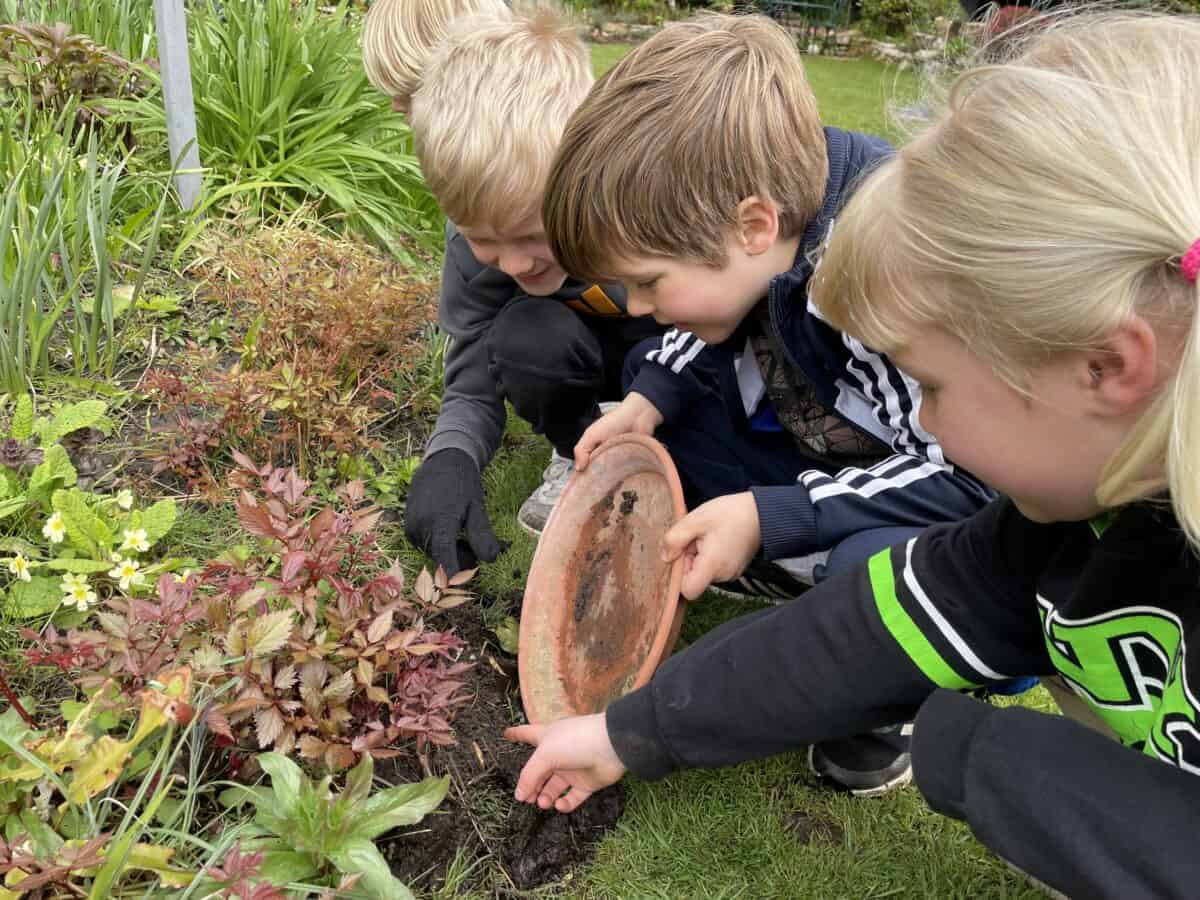
Make sure you put earthworms back in the soil carefully
Incorporating learning into the equation
So how can we incorporate math into this activity? And how can you teach math with earthworms to kids of all ages?
Toddlers and preschoolers
For little kids, have them count the number of earthworms they can find. This can help them learn how to count and recognize numbers. Or, you could let them compare the sizes of different earthworms they find. You can use words like “longer,” “shorter,” and “pinker” to teach them about comparing sizes and colors.
School-aged children 5-8 years old
Kids this age should be able to count in steps of 2, 5, 10 and order numbers to 1000. They’ll partition numbers into 100s, 10s, and 1s, add and subtract three-digit numbers, and do basic multiplication. On average, an earthworm is unlikely to be 2 digits long, but this activity can be good practice for one-digit adding.
You can also practice estimating with kids this age. Encourage kids to make a guess about how long the worm is before measuring it. This can help them develop their estimation skills and also add an element of fun to the activity.
Have the kids study the anatomy of earthworms and measure different parts of their bodies, such as their segments or setae (the small bristles on their body). This can help them learn about the structure and function of earthworms. While we were measuring our earthworms, we talked about their segments and how they can lose them and replace them. It was fun discussing how a bird might grab a worm at his tail but if the worm is quick enough and burrows down he might survive the attack. We queried whether a worm could replace its head! This led to a discussion about invertebrates and how that means they have no spine just like spiders, butterflies, crabs and lobsters. The children loved how a worm is actually a terrestrial invertebrate, they enjoyed making out that they were aliens and from another planet!

Older children (8+)
Older kids may be interested in analyzing the results of their measurements by creating a graph with statistics to show the number of earthworms and the size found by each participant. This can help them learn about graphing and interpreting data.
You can also challenge older kids to calculate the volume and density of earthworms by measuring their length, width, and height. This can help them practice their math skills and learn about concepts related to volume and density.
Encourage older kids to design their own experiments related to earthworms, such as testing the effect of different temperatures or light levels on earthworm behavior. This can help them develop their skills in scientific inquiry and experimental design.
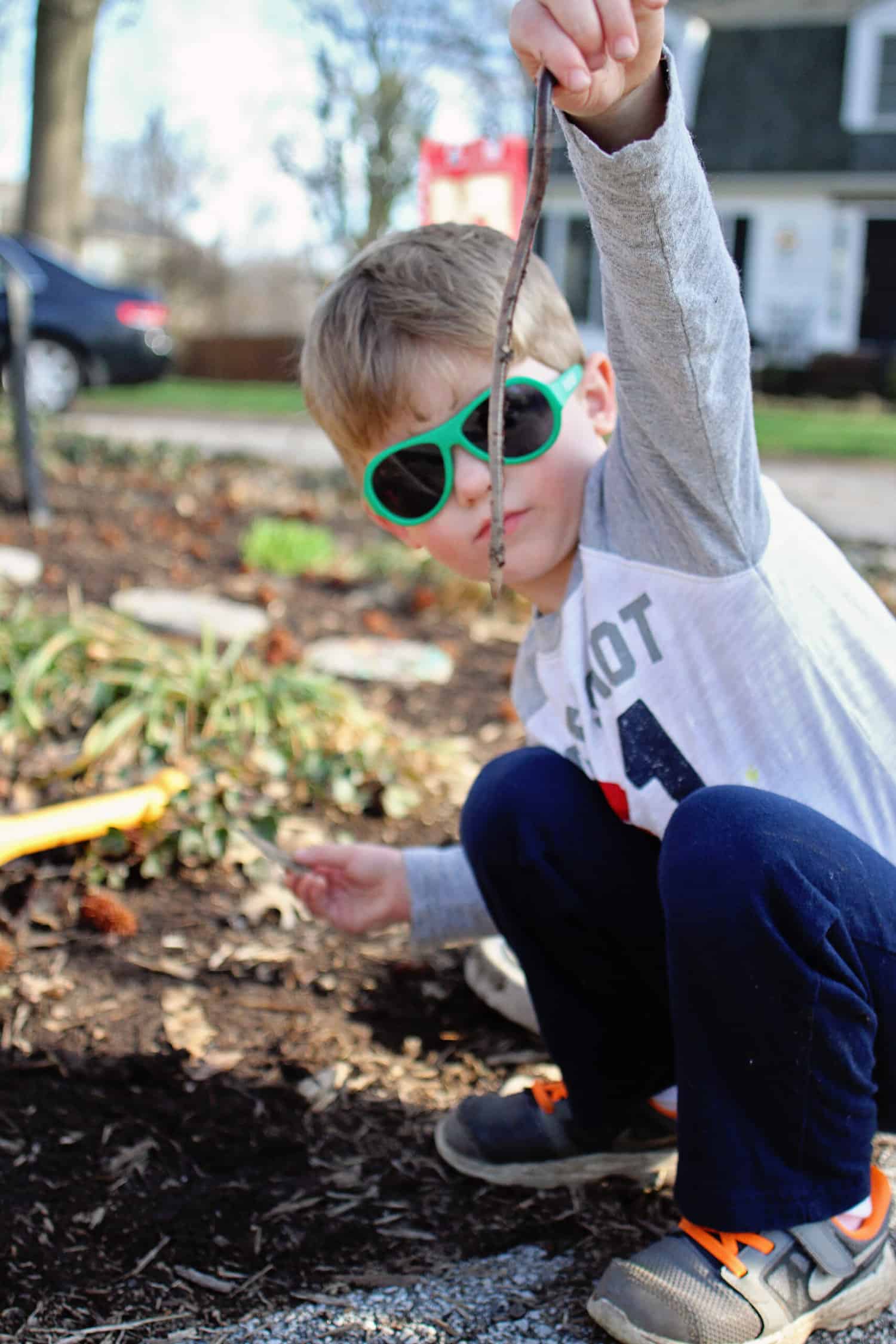
Making it fun
Measuring earthworms can be a fun game for kids when presented in an engaging and interactive way. Here are some ideas to turn measuring earthworms into a fun game for kids:
- Earthworm hunt – Start by having a group of kids search for earthworms in a designated area. The first child to find a worm wins!
- Earthworm Olympics – Create a series of challenges that involve measuring earthworms, such as “Guess the Length” or “Fastest Worm Measurer.” Award points for each challenge and tally them up at the end to determine the winner.
- Earthworm art – Encourage kids to draw or paint pictures of the earthworms they find and measure. This can be a fun way to combine art and science.
Remember to make the game age-appropriate and provide clear instructions on how to handle the earthworms with care. Emphasize the importance of being gentle and respectful to these creatures.
Are you kids into worms?
Have you ever used worms to teach?
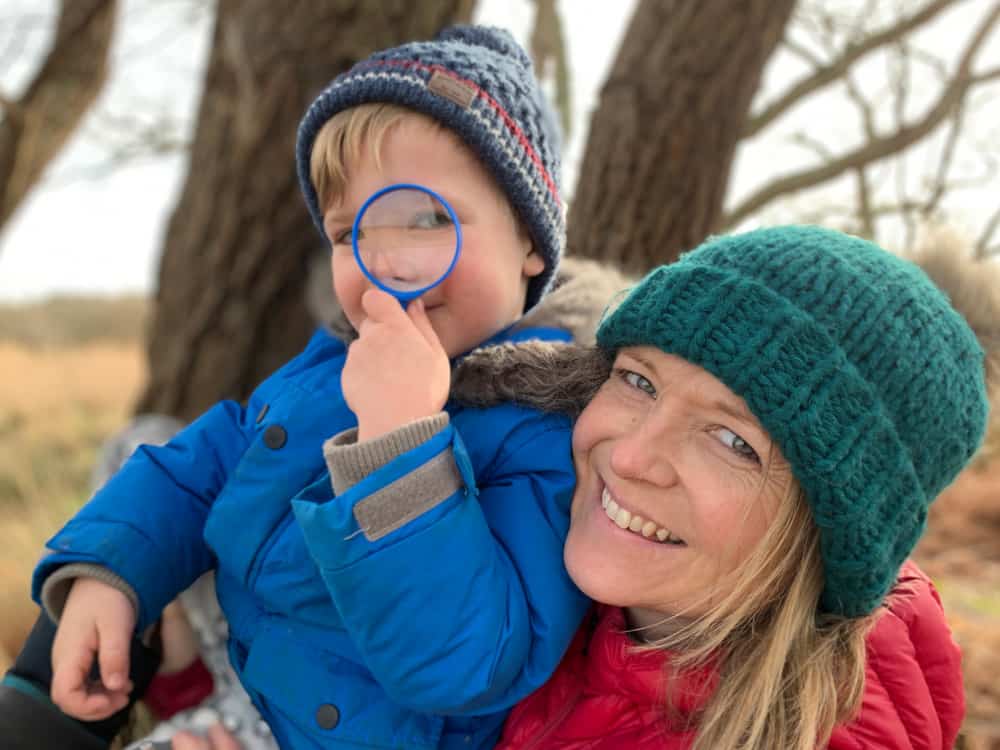
About the author
Hannah Martin has worked as a PE Teacher in the UK for 15 years. She has always loved being active outdoors. However, she discovered a new passion for nature and appreciating the environment when she had her son Hobie (now 5 years old). Hannah and Hobie’s vision is to inspire parents to spend time doing fun, creative, nature activities outdoors with their children; no matter where they live and whatever the weather. They believe spending time together outdoors as a family will encourage future generations to love and care for the world, wildlife, and environment.
Find more from Hannah (and Hobie) in the following locations:
Instagram: @hobies_nature_club
Website: hobiesnatureclub.co.uk
YouTube channel: Hobie’s Nature Club
RWMC Posts: Hannah Martin
The post Nature’s Math: Earthworm Measuring with Kids appeared first on RUN WILD MY CHILD.
